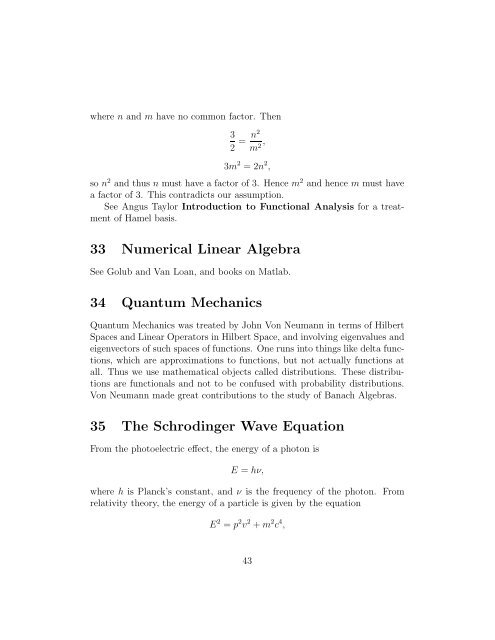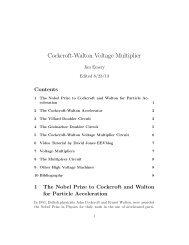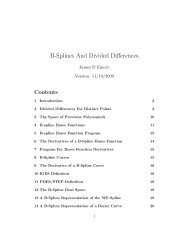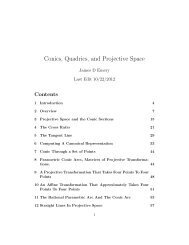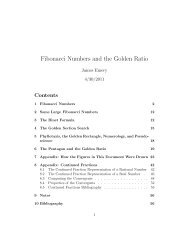Topics In Linear Algebra and Its Applications - STEM2
Topics In Linear Algebra and Its Applications - STEM2
Topics In Linear Algebra and Its Applications - STEM2
You also want an ePaper? Increase the reach of your titles
YUMPU automatically turns print PDFs into web optimized ePapers that Google loves.
where n <strong>and</strong> m have no common factor. Then32 = n2m 2,3m 2 = 2n 2 ,so n 2 <strong>and</strong> thus n must have a factor of 3. Hence m 2 <strong>and</strong> hence m must havea factor of 3. This contradicts our assumption.See Angus Taylor <strong>In</strong>troduction to Functional Analysis for a treatmentof Hamel basis.33 Numerical <strong>Linear</strong> <strong>Algebra</strong>See Golub <strong>and</strong> Van Loan, <strong>and</strong> books on Matlab.34 Quantum MechanicsQuantum Mechanics was treated by John Von Neumann in terms of HilbertSpaces <strong>and</strong> <strong>Linear</strong> Operators in Hilbert Space, <strong>and</strong> involving eigenvalues <strong>and</strong>eigenvectors of such spaces of functions. One runs into things like delta functions,which are approximations to functions, but not actually functions atall. Thus we use mathematical objects called distributions. These distributionsare functionals <strong>and</strong> not to be confused with probability distributions.Von Neumann made great contributions to the study of Banach <strong>Algebra</strong>s.35 The Schrodinger Wave EquationFrom the photoelectric effect, the energy of a photon isE = hν,where h is Planck’s constant, <strong>and</strong> ν is the frequency of the photon. Fromrelativity theory, the energy of a particle is given by the equationE 2 = p 2 v 2 + m 2 c 4 ,43


